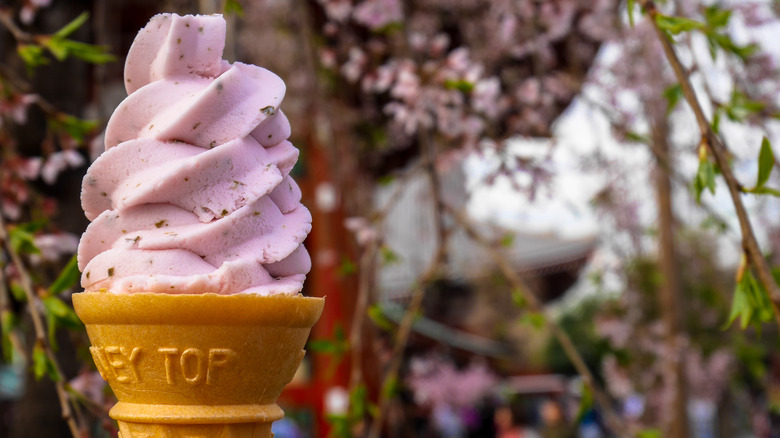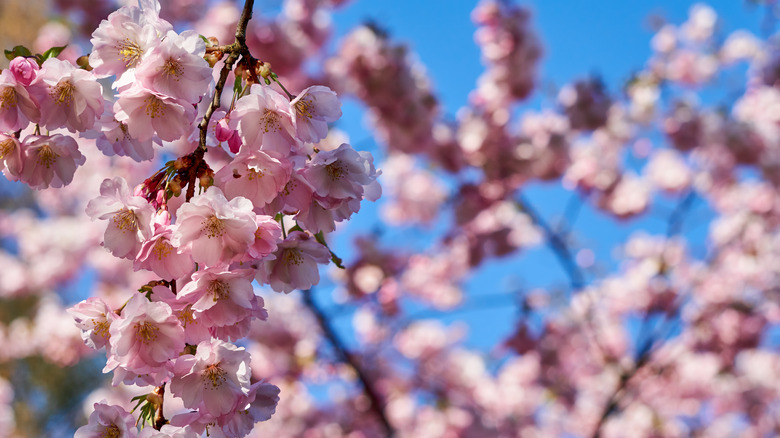How Toxic Cherry Blossoms Are Turned Into Edible Sakura
As spring approaches, the days get longer, the snow starts melting, and the flowers start blooming. And if you're lucky enough to be in Japan during this time, the end of winter means sakura season is fast approaching, when pink cherry blossoms appear on the trees and a soft, vanilla-like scent fills the air. Sakura season, which usually runs between the end of March to the beginning of April, is short-lived but hugely celebrated in Japan.
Not only is there a two-week-long festival that brings people together with eating, drinking, and other spring festivities, but stores come out with cherry blossom-themed food, beverages, decorations, and trinkets. Starbucks Japan, for example, typically debuts a line of adorable sakura drinks and cups every year — the lineup for 2023 includes a sakura soy latte, a sakura blended frappuccino and an array of pastel floral tumblers.
Yet while cherry blossoms inspire plenty of treats and drinks every year, eating one right off the tree may not get you in the celebratory spirit. Sakura can actually be toxic to humans if consumed raw and need to undergo a specific process to turn them into edible delights.
The blossoms are cured and pickled to make them edible
If you meander through Hirosaki Castle Park in Japan during late March, you may take in wafts of perfumed air from the plethora of rosy sakura trees. The vanilla-esque aroma can be credited to the chemical coumarin, which is present in cherry blossoms and the leaves on the sakura trees. While the sweet-smelling foliage may entice you to take a bite, try to resist temptation, as coumarin is actually toxic to humans in large amounts. In fact, the FDA has banned coumarin as a food flavoring since 1977.
So how do cherry blossoms go from prohibited, toxic substances to flavoring for delicious sakura mochi, pudding, and more? To convert sakura blossoms and leaves into edible substances, they're cured in salt during a process called "shio-zuké." It only takes about a day to get salt-pickled sakura — the blossoms or leaves are washed, dried, sprinkled with salt, and squeezed out the next day. To add a pretty pink hue, ume plum vinegar is then added. Not only does this process make the sakura edible, but it brings out the sweet scent of the coumarin.
Once you have vinegar-soaked sakura, they need to be either air-dried, oven-dried, or dehydrated to be ready to use. It's these pickled and dried flowers or leaves that are deployed in small amounts to flavor cherry blossom goodies.

